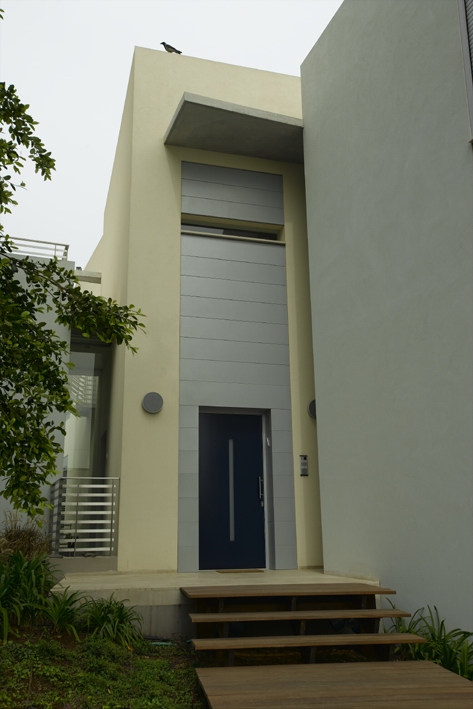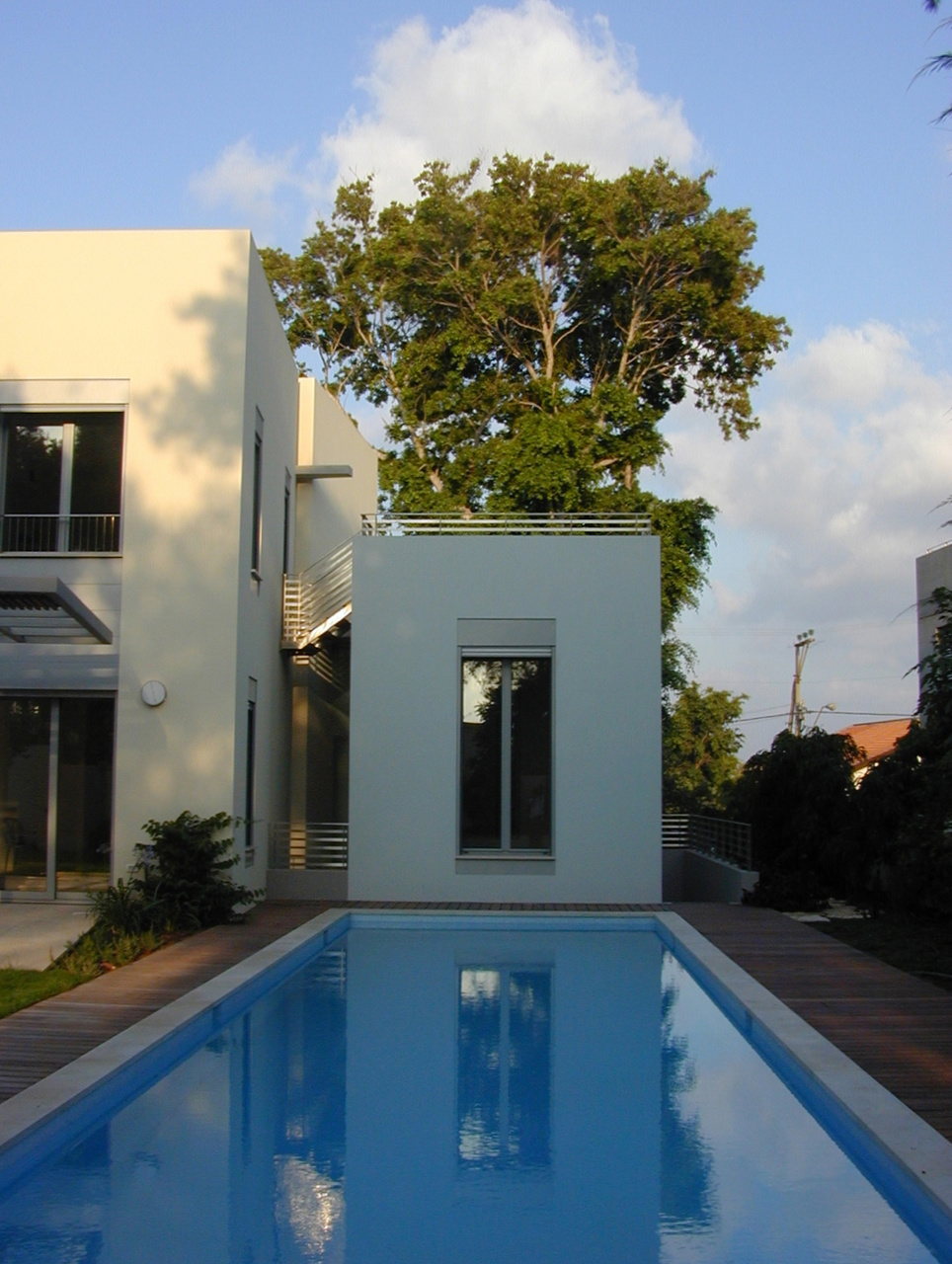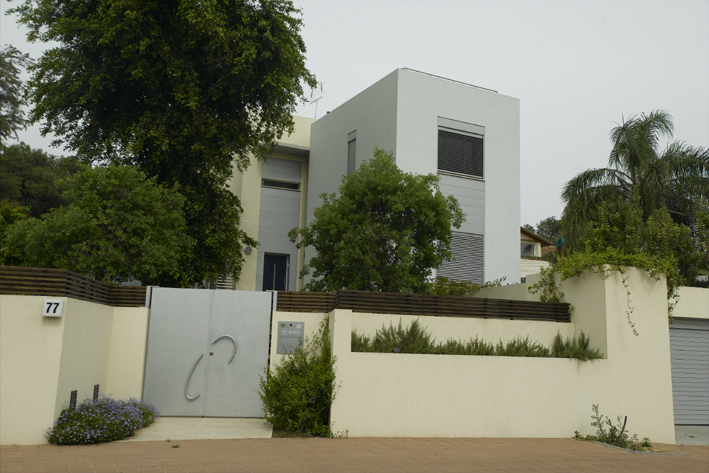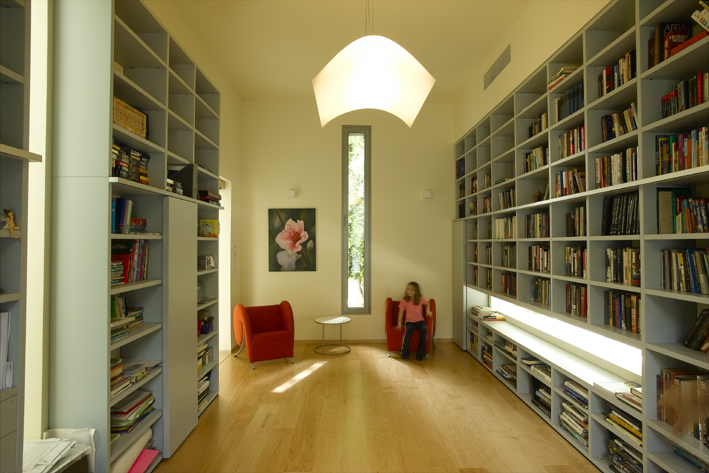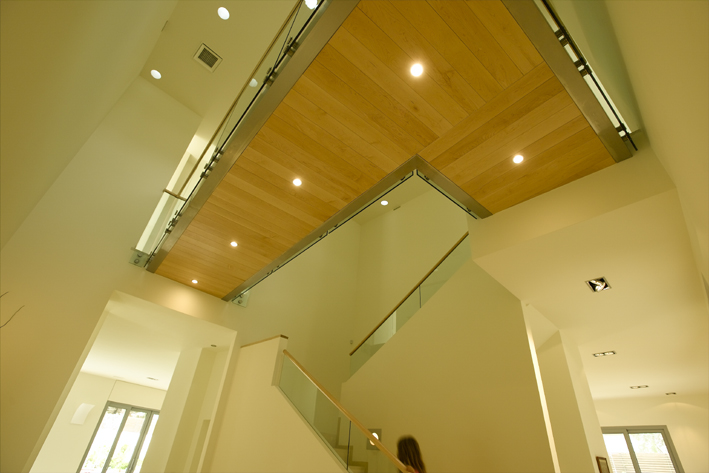The house with the Ficus Tree
The house was planned around the existing giant Ficus tree that was kept and protected during the constructions and was an inspiration for the architectural layout.
Despite its size (600 sqm), the internal spaces of the house are autonomous and maintain separation between family and private living areas to create a feeling of intimacy and to allow formal events without interfering the house private life. The entrance path to the house floats on a wooden deck overlooking vegetation that extends to the front door and passing by the Ficus tree. The house is built as a system of four rectangular structures “sitting” on the ground and connected by transparent passages (glass panels) that follow the house from the basement to the roof and covered with a thin concrete layer. The library, a single-storey structure with a high ceiling, is a direct continuation of the long and narrow pool and acts as a space for solitude and meditation.
The kitchen, in warm, earthy colors, is open to the dining room and the living room. The living room, leads into a large, green rear courtyard with a high wooden pergola through which the sky is always visible. The residential wing in the 2nd floor contains 3 independent units adapted to each household member with a floating bridge that separates the master room area from the children’s units. The house is a smart living “machine” with sophisticated operating systems that can be managed efficiently and independently. The major cladding material in the house is pigmented plaster in two complementary colors, which emphasizes the separation between the different forms that are linked by the transparent passages. The interior design gives the house a cozy and intimate feeling despite its size.
Site area: 1,000 sq.
House area: 600 sq.
Architecture and interior design: Studio de Lange
Engineer: Buki Snir
Construction inspector: Igal Ron
Location: Kfar Shmaryahu



